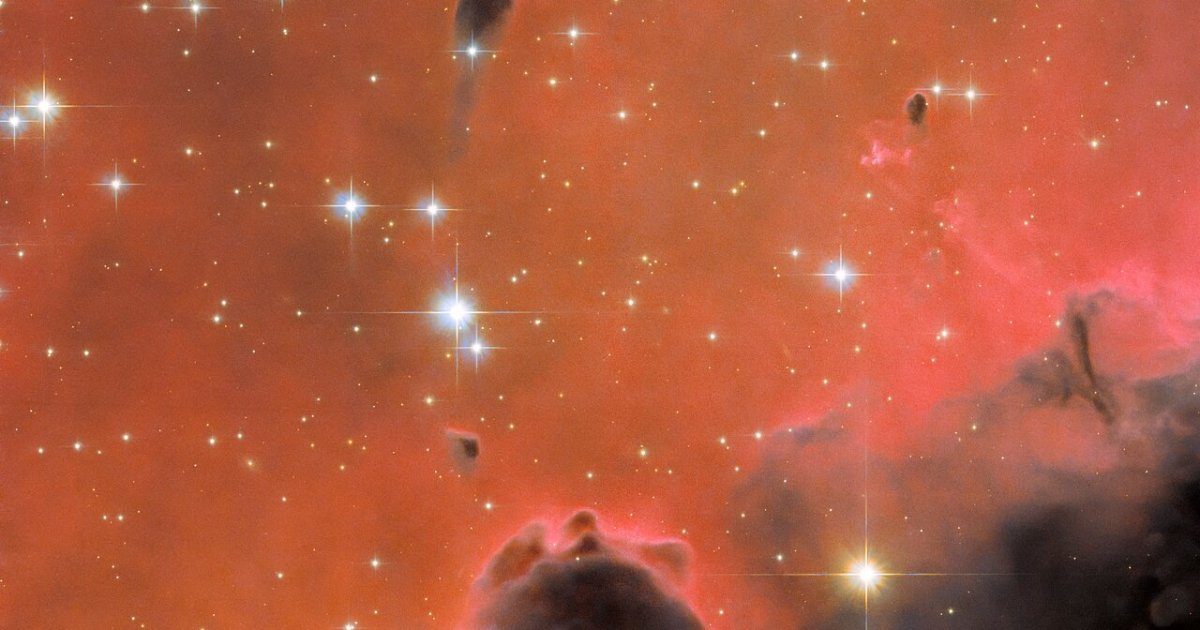A recently released image from the Hubble Space Telescope showcases the breathtaking beauty of a nebula, adorned in the vibrant colors of autumn. This timely capture coincides with the leaf-changing season in the northern hemisphere, offering a celestial reminder of the Earth’s natural cycles. The photograph specifically focuses on a section of the Westerhout 5 nebula, otherwise known as the Soul Nebula, positioned a staggering distance of 7,000 light-years away.
The Westerhout 5 nebula, classified as an emission nebula, owes its enchanting palette and intricate shapes to the process of ionization. The gas within the nebula becomes ionized due to the illuminating brilliance of bright, hot stars. As these massive stars are born, they emit intense radiation and forceful streams of particles called stellar winds. Consequently, this fierce energy blows away nearby material, preventing the formation of new stars in close proximity. These cosmic gusts create voids within the nebula, while simultaneously pushing the remaining gas closer together, leading to the formation of stars in these now denser regions.
Perfectly timed for the season of autumnal foliage, the latest photograph captured by NASA/ESA’s Hubble Space Telescope unveils a captivating scene with a dominant red hue. The image offers a glimpse into a small section of the Westerhout 5 nebula, sitting an astounding 7,000 light-years away from our planet. Illuminated by a radiant red light, this captivating depiction showcases various intriguing elements, including a free-floating Evaporating Gaseous Globule (frEGG). The frEGG featured in this image takes the form of a small, tadpole-shaped dark region located in the upper center-left portion of the photograph. This distinctive bubble has been bestowed with two names – [KAG2008] globule 13 and J025838.6+604259. The Hubble Space Telescope employed by NASA captured this mesmerizing image, with contributions from ESA/Hubble and R. Sahai.
Of particular interest within this image is the dark area positioned in the upper middle, known as a free-floating Evaporating Gaseous Globule (frEGG). This concentrated pocket of gas possesses greater resistance to the ionizing radiation surrounding it, resulting in the formation of an “egg-like” structure that becomes a potential birthplace for new stars. One prominent example of such EGGs is found in the widely known Pillars of Creation image, also taken by the Hubble Space Telescope. In that image, these pockets of denser gas manifested as protrusions on the nebula’s columns.
Within this particular image, the EGGs belong to a type referred to as free-floating, denoting their lack of attachment to a specific structure. Nonetheless, they possess a recognizable tadpole-like configuration, featuring a distinct head and tail. Over time, as the density of the surrounding area increases and temperatures rise, these gas pockets may serve as incubators for the birth of new stars, ultimately leading to the formation of protostars.

